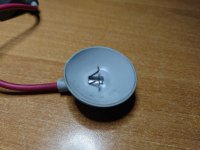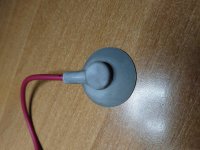I mentioned in the previous post about flyback transformers, especially transistor types that are potted, they are quite different to those for tube TV's where the windings were not well insulated and unreliable. In the transistor flyback transformer case, generally the windings are very very reliable, it is the integral EHT rectifier that is the weak point with the penchant for failure. That as I noted can often be repaired simply by adding another one.
A flyback transformer is dead easy to test out of circuit, all that is required is a signal generator to apply a small diagnostic test voltage of one volt, 50kHz to the primary and then check the secondary windings are producing the correct voltage with the scope. These ratios are generally evident from those found on the schematic. If there is a winding short (rare) the input impedance will be very low, it will then significantly load the generator and the correct secondary voltages will not be present.
The integral EHT rectifier as I mentioned is better checked with a VTVM for any leakage. It can read open, but in those cases it is still usually normal as some types have a very high forward voltage drop and the voltage source in a meter is not enough to get them into conduction. It is leakage that you are on the lookout for with that test.
I have never seen such nonsense on the internet, especially on you tube about CRT VDU's and flyback transformers. It might be a generational thing, as CRT TV's and VDU's started to fade away in modern production. Younger technicians did not get the formal training on them and are poorly read up on the operating principles, which old school TV technicians once knew about, very well. So you get all sorts of false assumptions and conclusions which are very misleading for those seeking help.
Keeping failure records for certain types or brands of TV or VDU had some utility in the repair industry, as it could save some time and make for a quick repair. However it cannot be relied on and repair tech's who needed those, rather than using first principle methods, would from time to time get caught with an infrequently occurring fault and end up stumped on the repair. The better method is to approach each fault as though it is the first time you have seen it and work through it in a logical manner with the correct test instruments, typically meters and the scope for a VDU, or you might end up with your foot in a pothole.









